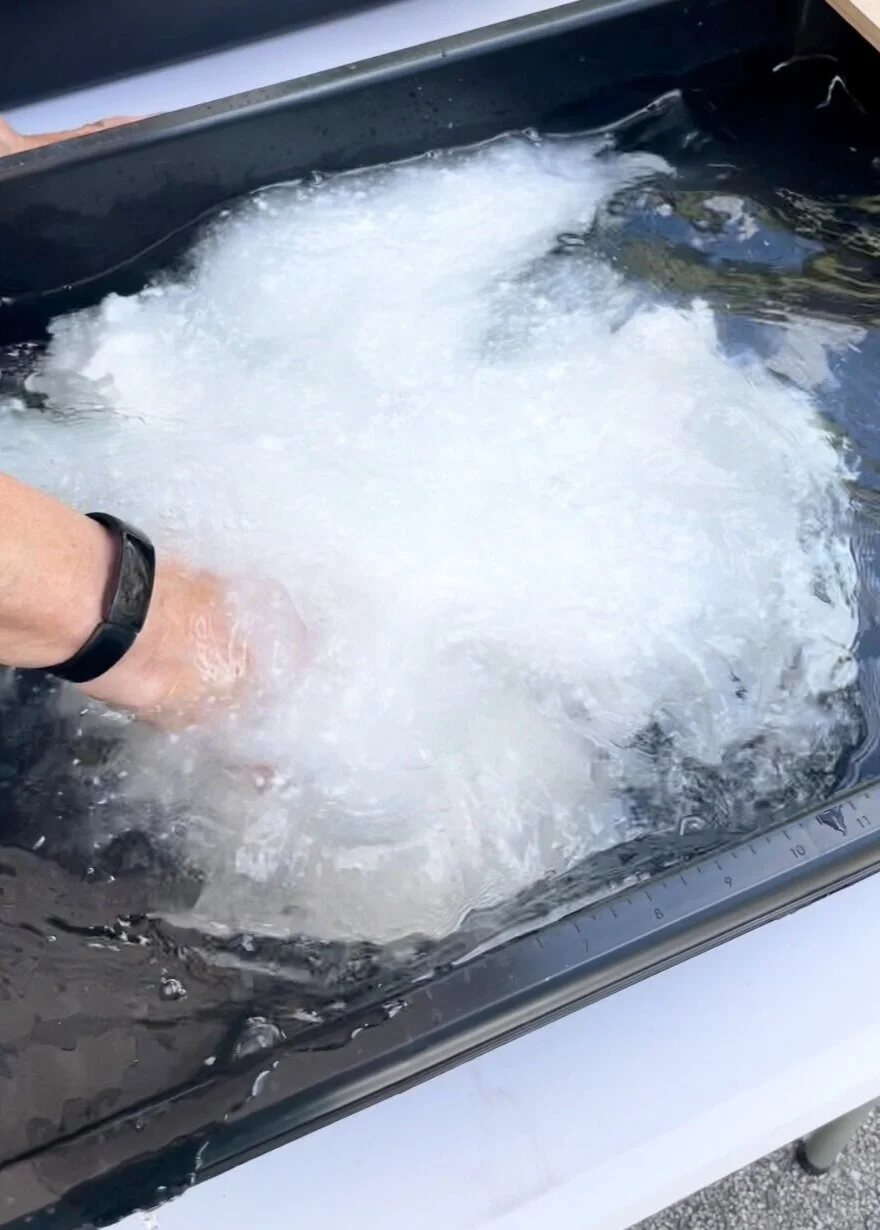Peeling the first sheets from the dry box
agitated paper pulp in water to get it ready to pull paper sheets
I was excited. I was finally unloading the dry box where the paper that I pulled from the last week had been drying between felts and cardboard (read the last post to see what happened last week). Found ephemera was layered between different paper combinations. Layering these materials while wet and unstable means that I could only make educated guesses as to what it would look like when dried into a paper sheet. Only through experimenting with different pulp combinations and materials was I able to see which was the most successful in interpreting my vision. Abaca and flax, cotton and abaca or flax, two layers of flax or abaca etc.
Looking at the results I noticed certain things right away. In some, with larger amounts of nest material, colors were leaching from the nests and the pieces were darker, heavier and not as ethereal as I had hoped. In others, the elements almost became lost due to the translucency of the paper, which allowed outside color in and muted the whole piece. I really responded to the cotton bottom sheet as this white backdrop allowed the embedded materials to pop. The cotton offered a flexible, solid and weightier background for placed natural elements and a sheer couched top sheet of either flax or abaca allowed the elements to reveal themselves.
handmade papers with nest ephemera
Ready for round two
When my artist friend, Avery, and I set up the pop-up outdoor papermaking studio for the second time I had a better idea of which combinations of pulp, materials and methods I wanted to use to manifest what was in my mind. This time around, we needed to juggle busier individual schedules, some rain and wind (which we adapted to by weighing down the tent with makeshift ballast and twine) and threats of thunder and lightning. However, since so many wrinkles were worked out the first time, we were both ready to dive right back in, elbow deep in pulp and possibility!
“ I need to listen to the work and see what more it requires.”
work in progress, handmade cotton and flax paper, nest ephemera
I started with thin sheets of cotton, using a lighter hand embedding the materials, and then attempted to make very sheer sheets of the abaca or flax, some of which were not full sheets. This way when I couched the top sheet, there were open areas and irregular edges that allowed the seeds, nest parts, eggshell and grasses to peek through. The robin eggshell blue was particularly striking through the sheer abaca, as were teeny seeds from a plant I harvested from a friend’s home. Mosses leached and bled. Bits of blue striped shredded paper that I found in several nests (from both MA and NY!) twirled and traced mark making lines. Dried flowers created watercolor washes.
By the end of this second week of papermaking, we were both spent but exhilarated. We packed up late into the night on Friday as I was headed to a week-long sculptural papermaking workshop that Sunday (more on that in the next post!). Paper was pressed and loaded into the dry box and a new wait began.
I always need time to look at, live with and ponder work once I have embarked on a new series. I need to listen to the work and see what more it requires. Hand stitching? Burning? Drawing? The work is always different than what originally sparked the explorations and creation. I need to let go of my preconceived ideas, and see the work in front of me as having its own life and voice. What does it bring with it? Where does it need to go? What is it trying to say? I look forward to puzzling out these answers in time with this second round of papers.
handmade papers
Subscribe to receive email updates for new blog posts




